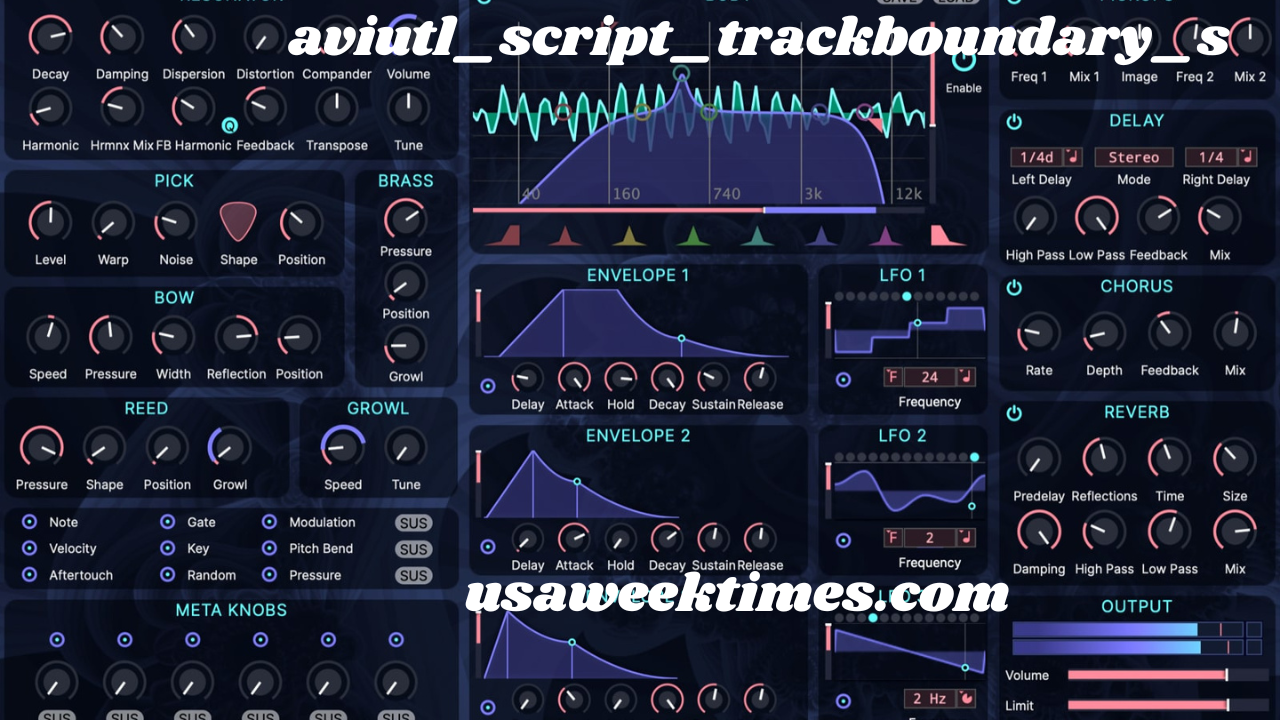A Comprehensive Guide to Aviutl Script: aviutl_script_trackboundary_s and Its Usage
Aviutl is a popular video editing software that offers flexibility and power to users, especially through its scripting features. Among the various scripts available for enhancing workflow and automating tasks, one of the noteworthy scripts is aviutl_script_trackboundary_s. This article delves into understanding the intricacies of aviutl_script_trackboundary_s, its functionality, and how it can be utilized for optimal video editing results.
What is aviutl_script_trackboundary_s?
aviutl_script_trackboundary_s is a specific script created for use within Aviutl that aids in defining and managing track boundaries in a project. In simpler terms, it allows users to specify the start and end points of the video tracks, enhancing control over the editing timeline. This script is incredibly useful when editing complex video projects, where precision in trimming or defining the duration of each segment is essential. It offers a higher level of customization compared to the default editing tools available in Aviutl.
The key feature of the script lies in its ability to set and adjust track boundaries for each element within a project. By utilizing this script, users can define where one track begins and another ends, ensuring better management of overlapping elements, audio tracks, and visual content.
The Importance of Track Boundaries in Video Editing
Track boundaries play a critical role in organizing video projects. Without clear boundaries, it becomes challenging to manage various elements like video clips, audio files, transitions, and effects. The tracks in Aviutl represent different layers of content, and controlling their boundaries is crucial for efficient workflow. Here’s why track boundaries are important:
1. Accurate Timeline Management
Setting track boundaries helps to precisely align video clips and audio, ensuring that they sync correctly and maintain consistent timing throughout the project. Without clear track boundaries, clips could overlap or get misaligned, resulting in unwanted transitions and cuts.
2. Improved Organization
Having well-defined boundaries makes it easier to keep track of which clips belong to which part of the project. Whether you’re working with multiple layers of video or different audio tracks, clear boundaries reduce the confusion of overlapping content.
3. Enhanced Editing Flexibility
By defining where each track starts and ends, editors can easily make adjustments to individual elements without affecting other parts of the project. This makes it simple to delete or replace segments without disrupting the overall structure of the video.
4. Better Visual Feedback
Track boundaries can also help in providing visual feedback on the editing timeline, making it easier to see the transitions between segments. This visual clarity aids in ensuring smooth edits and transitions between scenes.
How aviutl_script_trackboundary_s Works
The functionality of the aviutl_script_trackboundary_s script is centered around its ability to manage track boundaries programmatically. This means users can define track limits using the script, giving them a precise control over the video project.
1. Basic Syntax and Usage
To use aviutl_script_trackboundary_s, users typically input a set of parameters to specify the boundaries of their tracks. For example, the script allows users to define a starting frame and an ending frame for each track. The basic syntax for using the script might look like this:
textCopyEdittrackboundary_s(start_frame, end_frame)
In this example, start_frame and end_frame represent the frames at which the track should begin and end, respectively. Users can replace these placeholders with actual frame numbers or use variables for dynamic control.
2. Integration with Other Scripts
Often, aviutl_script_trackboundary_s is used alongside other Aviutl scripts to automate or customize workflows. For example, a user might use it in conjunction with a script that handles clip trimming or transitions. By combining these scripts, users can create more complex editing workflows that adapt to different project needs.
3. Automatic Track Resizing
One of the most powerful features of aviutl_script_trackboundary_s is its ability to automatically adjust track boundaries when clips are resized or when new elements are added to the timeline. This reduces the manual effort required to adjust track limits and ensures that the tracks are consistently updated as the project evolves.
Practical Examples of Using aviutl_script_trackboundary_s
To better understand the application of aviutl_script_trackboundary_s, let’s look at some practical scenarios where this script can be of immense value.
1. Editing Multi-layer Video Projects
Imagine you are working on a project with multiple layers of video, each containing various clips. Managing the boundaries of these tracks manually can become tedious, especially as the project grows. By using aviutl_script_trackboundary_s, you can automate the process of setting track boundaries to ensure that each clip stays within its designated track.
For instance, you could create a script to automatically adjust the track boundaries whenever a new clip is added or removed. This ensures that the timeline is always organized and that overlapping tracks don’t interfere with each other.
2. Audio Synchronization
Another common application of aviutl_script_trackboundary_s is in synchronizing audio tracks with video. For projects where audio needs to be synced to specific scenes, this script can help by setting track boundaries to match the video clips’ timings. This is particularly useful for projects like music videos or voiceovers, where synchronization between video and audio is crucial.
3. Dynamic Scene Transitions
In cases where a video has multiple scenes with varying lengths, setting the track boundaries for each scene ensures that transitions are smooth and well-timed. You can use aviutl_script_trackboundary_s to define the start and end points of each scene, making it easier to apply effects or transitions between different segments.
Advanced Features and Customization
While aviutl_script_trackboundary_s is fairly straightforward, advanced users can customize the script to fit specific needs. Here are some additional features and tips for using the script:
1. Dynamic Track Boundaries
Instead of setting fixed start and end points for tracks, users can make the track boundaries dynamic, based on variables such as the duration of a video clip or the number of clips in a project. This flexibility allows the script to adapt to changing project requirements.
2. Using Variables
For more advanced use cases, you can create variables within the script that represent track boundaries. These variables can be calculated based on project parameters, giving users even greater control over the editing process.
textCopyEdittrackboundary_s(start_frame = get_clip_start(), end_frame = get_clip_end())
This example dynamically sets the track boundary based on the clip’s start and end points.
Conclusion
aviutl_script_trackboundary_s is an invaluable tool for video editors working with Aviutl, allowing them to manage track boundaries with precision and ease. Whether you are editing a simple video or a complex project with multiple layers, this script provides enhanced control over the timeline, ensuring a smoother editing process. By automating the management of track boundaries, users can focus more on creative aspects of the project, while ensuring that each element stays in place.
Mastering this script can significantly improve your workflow in Aviutl, offering flexibility, automation, and precision in your video editing projects. Whether you are an experienced editor or a beginner, aviutl_script_trackboundary_s is a must-learn tool to incorporate into your editing toolbox.




